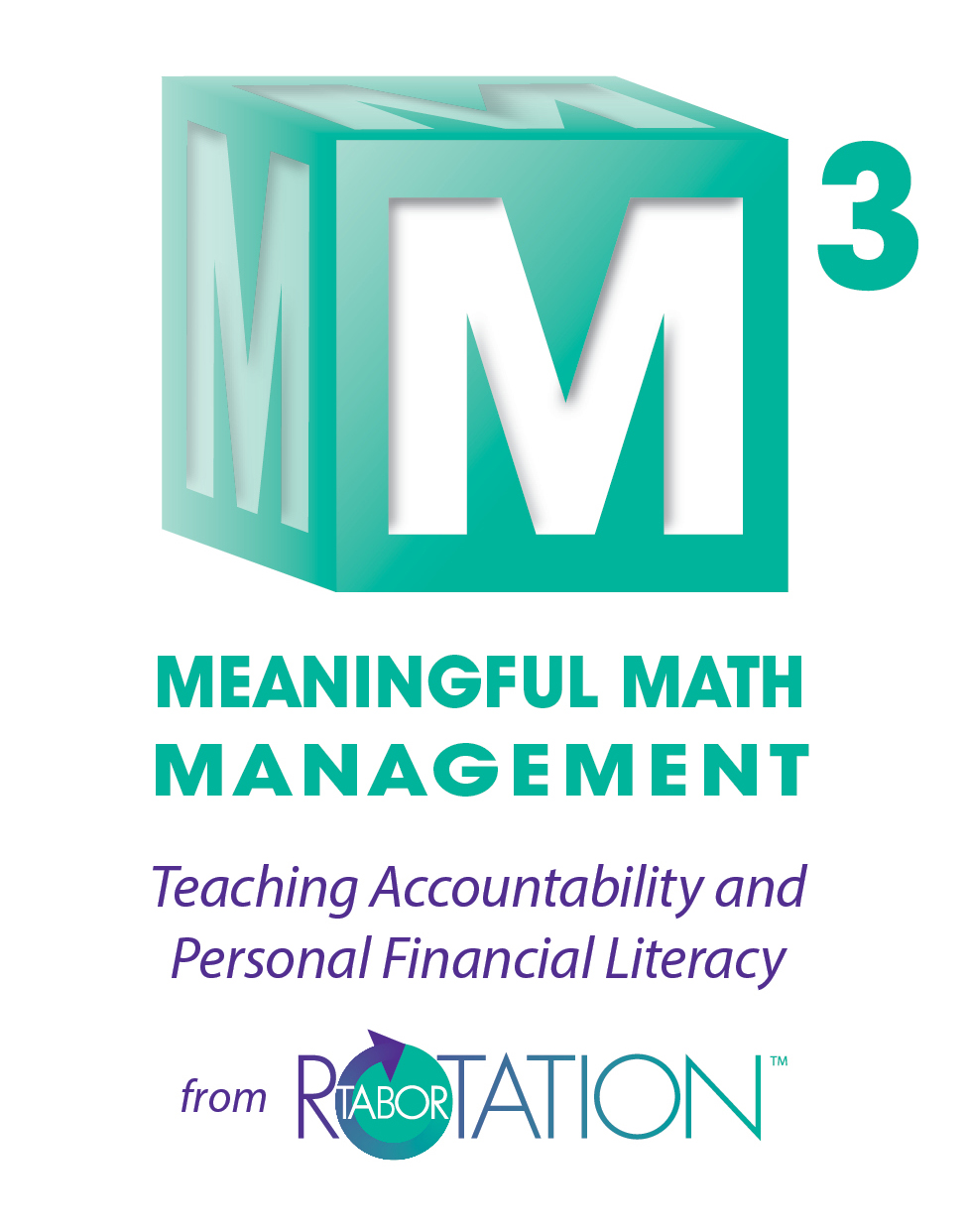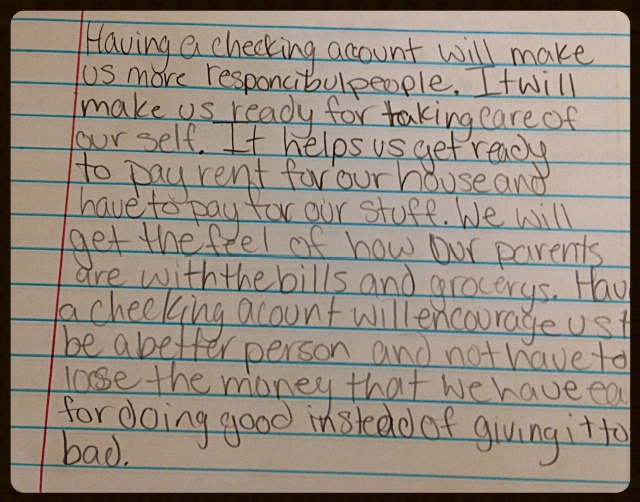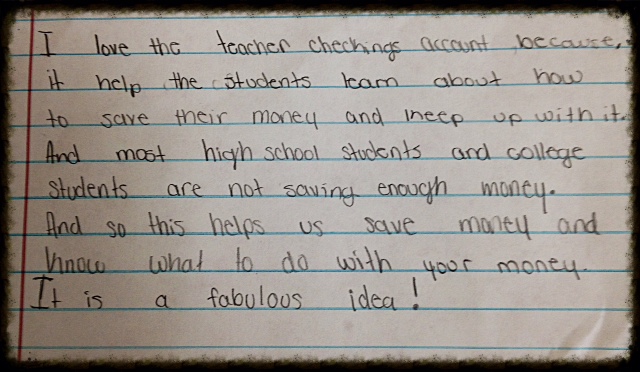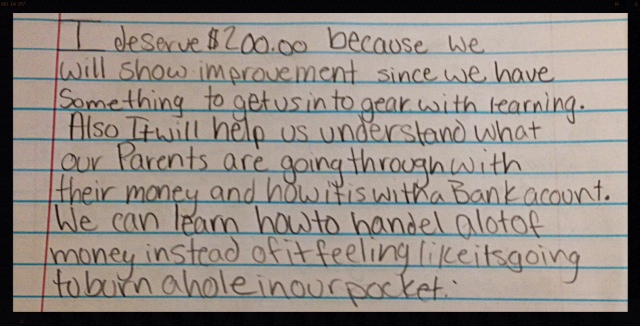How can you increase scores on a state test by teaching financial literacy?
That was one of the questions asked by several teachers who were recently trained in M-Cubed: Meaningful Math Management. This resource is used nationwide to teach accountability and personal financial literacy at the same time. I created M-Cubed a couple of decades ago when trying to give my students a real-world application of math concepts.
After reviewing their pre-assessment on decimals, I knew I needed something that would grab their attention besides decimal rules. I sat in one of the desks in my room and tried to think like my students. When did decimals, computational proficiency, conversions, and percents become important to me? My first idea ended up being the students’ favorite one, too. It was my first checking account that was my first taste of using mathematical concepts in a real-world setting. Why not create one for them?
Now, back to the increase in scores.
How could using a pretend checking account help students’ scores increase? Here are just a few examples.
1. Students earn salaries for working hard and applying themselves in the classroom. Test Connection: It becomes habitual for students to work hard and apply themselves on everything that is done in the classroom. This includes tests. Plus, every time I gave a quiz or a test during the school year, and they used their repertoire, it earned them extra income. Every student worked hard because it was what you did.
2. Students begin to see the connections between what they studied in school and the real world. The more income they want, the more extra work they do, the more money they have to spend in the classroom store. Test Connection: The harder you work on a test, the better your score, the more you know about math, the more you can do with it to earn money in the real world. This is exactly what happens with the class checking accounts.
3. Students have to pay debits for not being prepared for class. Borrowing a pencil during class time costs 3 times as much as buying a pencil when the classroom store is open. And, you have to calculate the difference in cost correctly in order to borrow the pencil. Test: Students start coming to class prepared and begin to train themselves to buy pencils ahead of time, even if no one from home purchased one. This leads to them being more responsible with supplies, homework, and learning. The test scores go up as the amount in their bank account increases.
Before any student may open an account, the teacher requires them to write why they deserve the first $200 in their account and why having a checking account is a good idea. After reading the first few written by their students, teachers are always convinced it will be worth their efforts. But I’ll let you read for yourself…
I’m always surprised by one of the concerns that teachers have about using M-Cubed. They are concerned about the response from teachers who think that extrinsic motivation isn’t a good way to improve a student’s work habits or behavior. These teachers believe that students should do well in school because they have an intrinsic desire to do so.
How do you respond? I always ask this question.
“Do you come to work for free?”
Interestingly enough, the students in these classes were quick to tell me that they knew their teachers were paid to teach them, but they weren’t getting paid extra for creating a meaningful way for their students to learn concepts. They realize that their teacher’s intrinsic desire to do what is best for their students is the driving force for using M-Cubed. M-Cubed provides the extrinsic motivation to get students to “the table of learning.”
However, without intrinsically engaging and qualitatively challenging instruction that leads to competence, relatedness, and autonomy (Deci & Ryan, 1985; Ryan & Deci, 2000; Self-Determination Theory), M-Cubed is worthless. [Read more about the balance of intrinsic and extrinsic motivation.]
Because this management system is the perfect compliment to the Tabor Rotation Framework and is applicable at every age level, it’s available to anyone for free. (There’s even one to use at home and one to use with preschoolers.) A Slideshow Presentation explaining M-Cubed can be downloaded and/or watched from the FREE RESOURCES page.
Here are some of the components you might want to use as you implement this incredible management system with your classes: M-Cubed Checkbook Cover, M-Cubed Earned Income Spreadsheet, M-Cubed Checks, M-Cubed Debit and Credit Examples, and the M-Cubed Check Ledger.
Can learning about financial literacy increase scores? It has in every classroom where it’s been implemented. Why not try it with your students and see what happens!





